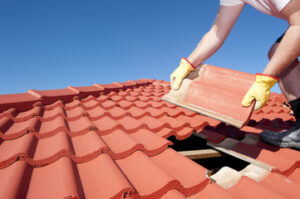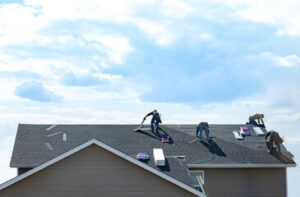Whether you’re updating your home’s appearance or repairing damage, proper Drywall Installation Las Vegas is essential. Unfortunately, mistakes can lead to a less-than-desirable finished product.
Getting the basics right can prevent common problems like sagging and bulging. Here are some expert tips that will help you achieve flawless results.

Preparation
Drywall is an essential material for many construction projects, and it’s critical to have the right equipment on hand to ensure a professional finish. Whether you’re working on an interior wall or a ceiling, proper preparation is crucial to ensure that the finished project looks great and stands up to the test of time.
Proper sanding is essential to creating an even surface for painting, and it’s important to do this carefully and evenly. Incorrect sanding can leave rough spots that will show through the final finish, and it can also damage or scratch the surface of the drywall. Once the walls are sanded, they should be primed to create an even and protective layer before installing the drywall.
Preparing the framing properly is also an important part of a successful drywall installation. This involves measuring and marking the boards so that they are the correct size and ensuring that the framing is square and level before proceeding to hang the drywall.
When cutting drywall, it’s important to use a sharp blade and follow the line that has been marked, as this will help to prevent nicking electrical wires or plumbing lines. This is particularly important when working on high walls or ceilings, where it’s easy to nudge an unnoticed cord or pipe by mistake.
Similarly, when screwing the drywall, it’s important to double-check that each fastener is set below the paper and doesn’t break through into the gypsum core. Incorrectly setting screws can lead to a weaker finished product and could cause problems in the future, such as a popped nail that needs to be repaired.
Finally, it’s also important to prepare the seams and joints with mud and tape, as this will help to strengthen the joint and make it watertight. Applying the mud in thin layers and allowing plenty of time for it to dry between each application will help to prevent unevenness and cracks down the road. For the best results, it’s also a good idea to use an all-in-one joint compound that includes a primer and can be used as one step.
Measurement
When working with drywall, it’s important to take the time to fully assess the space and accurately measure the height and width of the walls and ceilings. This helps ensure that you have enough drywall to complete the project and avoids having to go back and purchase more later. It’s also a good idea to plan for any windows and door openings so that the drywall can be cut out and the frames fastened into place around them.
Incorrect measurements can lead to several problems, from improperly fitting drywall panels to poor seams. For this reason, it’s essential to use a tape measure and always double-check your work. A simple way to ensure that you’re measuring correctly is to write down the measurement on a piece of drywall scrap before cutting it. This will help you remember the measurement when working in tight spaces or when trying to match texture.
It’s also essential to account for any electrical or plumbing obstacles that may be hiding behind the drywall before you start hanging it. Failure to do this can result in costly mistakes and delays, so it’s critical to thoroughly inspect the framing for electrical wiring, pipes, and fixtures before installing drywall. This allows you to mark the location of these obstacles so that you can cut through the drywall where necessary and avoid hitting them with tools like hammers or drills.
Drywall dust can infiltrate every surface, so it’s vital to take the proper precautions to protect yourself from it. This includes wearing a dust mask and gloves, covering furniture and flooring, and taking the time to properly set up your workspace. It’s also a good idea not to work alone so that you can avoid accidental injuries and other issues.
Lastly, it’s important to keep up with the latest developments in drywall materials and supplies to improve the quality of your work. For example, by using time-saving products like self-adhesive mesh tapes and quick-drying joint compound, you can speed up the drying process and get your wall or ceiling ready for painting sooner.
Cutting
A successful drywall project requires careful planning and attention to detail. Rushing into the process can lead to several problems, from material wastage to misaligned seams. In addition, using the wrong type of drywall for your space can compromise its longevity. The good news is that by avoiding these common pitfalls, you can achieve a smooth and professional finish for your drywall project.
Before you begin, be sure to clear the space where you’ll be working and remove all furniture, appliances, and fixtures. This will ensure that you have a safe and unobstructed workspace for the installation process. It’s also a good idea to cover floors and other surfaces with plastic sheets or tarps to protect them from dust and debris.
Careful measurement and meticulous planning are critical for a successful drywall installation, especially when it comes to areas with complex angles or curves. Use a drywall saw equipped with a keyhole blade to create openings for switches, electrical outlets, and other fixtures, and carefully measure and mark the dimensions of each cut. Using a miter saw or jigsaw for these cuts will help you avoid damaging the surrounding drywall.
Taking the time to inspect and prepare your framing before beginning the installation process is another essential step in ensuring a successful outcome. Make sure there’s sufficient blocking at inside corners, and add more if necessary. Also, be sure that all screws are set properly; a protruding screwhead can cause the drywall to crack or break later on.
Once the drywall is installed, it’s important to apply a second coat of joint compound to cover any rough edges and fill in small gaps. However, many contractors forget to apply this second layer, which can result in unsightly bumps and creases in the wall surface. To prevent this problem, be sure to follow the proper application technique and allow adequate drying time between each application of the compound.
The most effective drywall installations are those that are performed by professionals who adhere to the highest standards of quality and safety. Hiring a professional can save you the headache of dealing with costly mistakes and costly rework down the road. However, if you’re working on a budget, consider seeking out skilled handymen or experienced DIYers through websites like TaskRabbit or local community boards. These individuals often possess the expertise needed to complete a drywall installation project at a more affordable rate than seasoned contractors.
Hanging
Working with drywall is heavy work, so it’s important to take care not to strain yourself. If possible, work with a helper to lift and move the sheets. If you have a hoist to use, make sure it can handle the weight of the drywall and that you are familiar with its operation. If you are going to cut the drywall as you hang it, use a sharp utility knife and T-square to achieve crisp, clean cuts. Ideally, you will have pre-measured the space where you will hang the drywall to avoid mistakes and save time. A keyhole saw helps cut spaces for electrical outlets and light switches, while a circle cutter can be useful for curved areas.
Once you have the drywall in place, it’s crucial to check it for level and secure it. A sagging wall or ceiling is not only unsightly, it can lead to water damage and other serious issues down the road.
To ensure that your drywall is properly secured, use a spirit level to measure the level of each stud. If the drywall is uneven, it’s time to call in a contractor to correct the problem.
After the walls or ceiling are level, begin driving screws into them. It’s best to use drywall screws, which are designed to be fastened into drywall and offer excellent holding power. Start at the center of the wall and work your way outward, driving 1-1/4-inch screws every 16 inches along the studs.
When you’re finished securing the drywall, apply a coat of primer to protect it and prepare it for paint. While it’s tempting to skip this step, don’t. Using a high-quality primer that is specifically formulated for drywall surfaces will prevent it from flaking or peeling later on.








